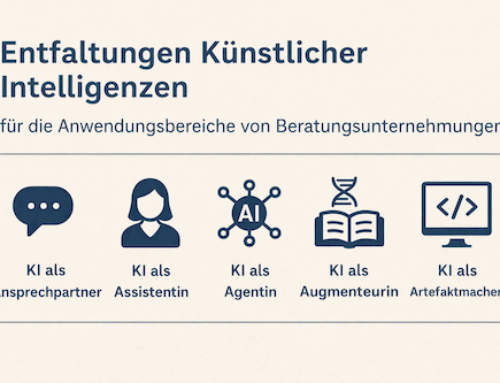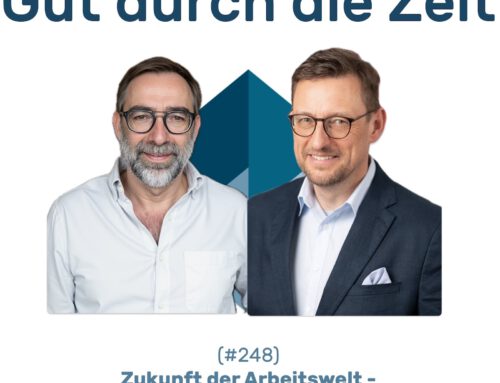The mathematical-technological digital revolution
The practice of machine singularisation
I. Introduction
By way of singularisation and culturalisation, postmodernism (from around the 1970s) displaces organised modernity as it had developed in the USA and Western Europe since the 1920s. This singularisation noted by Reckwitz can be seen in five units – namely in objects (artefacts, especially objects), in subjects, in spaces (places, cities, natural areas etc.) as well as in temporalities (events etc.) and in collectives. They are activated and claimed by social practices.
Reckwitz emphasises three drivers of singularisation: the socio-cultural authenticity revolution, the post-industrial cultural capitalism revolution and the mathematical-technological digital revolution. The following is about the latter revolution.
The mathematically-based technology revolution (digital transformation) is changing the relationship between man and machine. The machines of the digital revolution singularise and culturalise instead of deepening the routines of the social logic of the general; they provoke and produce above all individual and social patterns of uniqueness. In this sense, the digitalising machines do not simply perform, but design, enable and observe performances of the particular.
II The thrust of the digital transformation
The digital transformation is transforming social life, not just working and organisational life, but social and individual life as a whole. Three directions are recognisable:
- (Pattern) recognition machineThe core of digital transformation is to generate, process and visualise data and information, which in turn has an overall effect on human actions and decisions. Action and impact, measurement and feedback as well as adaptation and influence can be tracked in practically real time. Even the expectation of measurement and feedback influences the initial action.
- Disaster machineDigital transformation is a catastrophe for the established social routines (Nasehi) – very similar to the printing press for the medieval tradition.
- Culture machineThe technologies of the digital network support the logic of the particular by singularising because they provoke and establish uniqueness. Visibility through performance is establishing itself across the board. This is the fundamental breaking point in the technologies of the 1st and 2nd machine age.


III Digital network technologies
A society's technologies do not simply determine how we live, work, love and worry, but also influence, shape, enable and prevent these areas. The upheavals do not simply happen through the digital-technological supply structure, but are the consequence of the acceptance by the social parts. The technology of the 1st machine age (Brynjolfsson/McAfee), which in the logic of the general, potentiated our and animal muscle power and made the industrial age possible, is being replaced by a technology that potentiates our mental powers, but above all culturalises and singularises them in the logic of the particular.
At this point, the discourse on narratives of progress and decline unfolds.
- Algorithmic-processing computing – Computerisation (since the 1940s)
- Digitised-media formats – Digitisation (since the 1960s)
- Communication network called Internet – Networking (since the 1990s)
The Break in the technological impact for the social is reflected in the fact that industrialising technology measured the world, formalised, mechanised and standardisedwhile the digital technology continues the (social!) world on the hidden inside of this programme, but singularises the performances on the visible outside (screen). Industrialising technology has driven functional rationalisation and objectification, while digital technology is generating social Culturalisation and intensification of affectwhich, if you like, was able to build on the psychoanalytically founded, anti-industrial counter-movement of (humanistic) psychologisation, which in any case aimed for a deeper feeling from the outset. This is why – at least it seems – the cultural counter-movements welcome digital technologies, especially in the face of social affliction and culturalisation tendencies.
IV. The practice of machine singularisation
Machine singularisation takes place through the provocation of performance. Although the machine automatically sorts and functionalises in the background, its visible results do not follow the logic of the general, but the logic of the particular of culturally charged goods.
Both the employee should no longer act conformistically, but should affect, inspire and be enthusiastic, as well as industrial products should embody batch size 1; cities, neighbourhoods, spouses and children should also be unique (which they are, but must always show!)
While in the logic of the general the authoritative social practices Work and interaction are now, in a singularistic society that follows the logic of the particular, the Performativity, which always afflicting excludes.
Performance counts. Social action becomes performing action per se. We no longer work and interact just to earn money, we perform, present us – and what we do, always happens on stage of one's own life, which has its observers in the (social) media and is potentially observed and evaluated by any number of third parties. The performative moment is striking for the singularistic society.
Performing action differs from rational behaviour through its Affect contentits affirmative influence on those involved. In the cool mode of rational behaviour, emotions are largely excluded or at least undesirable. This is quite different in presentation mode, in storytelling, where emotionalisation is necessary. Everything you do has to make the world a little bit better if you want to talk about it. You can't go below that, below that is boring.







Leave A Comment